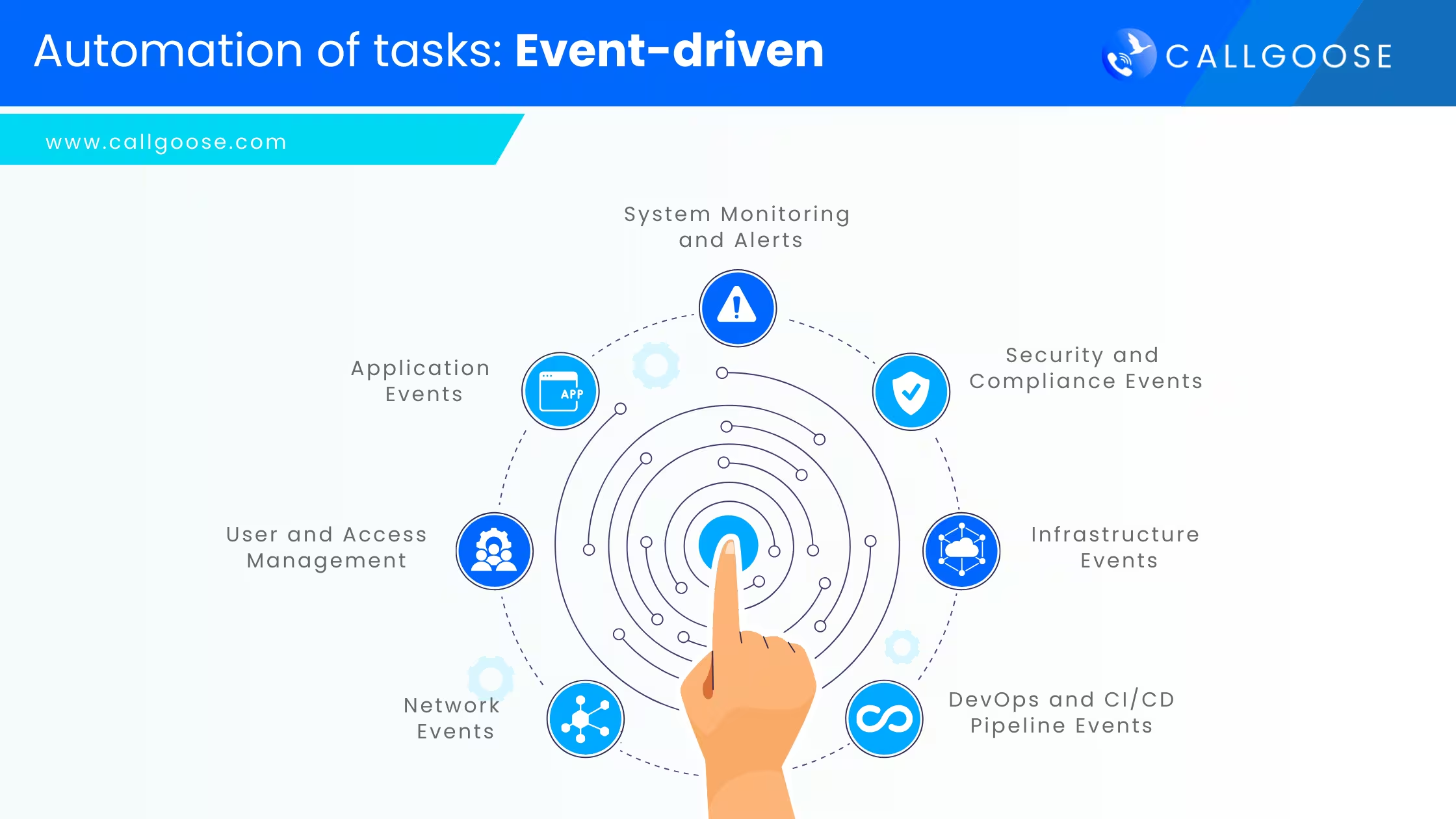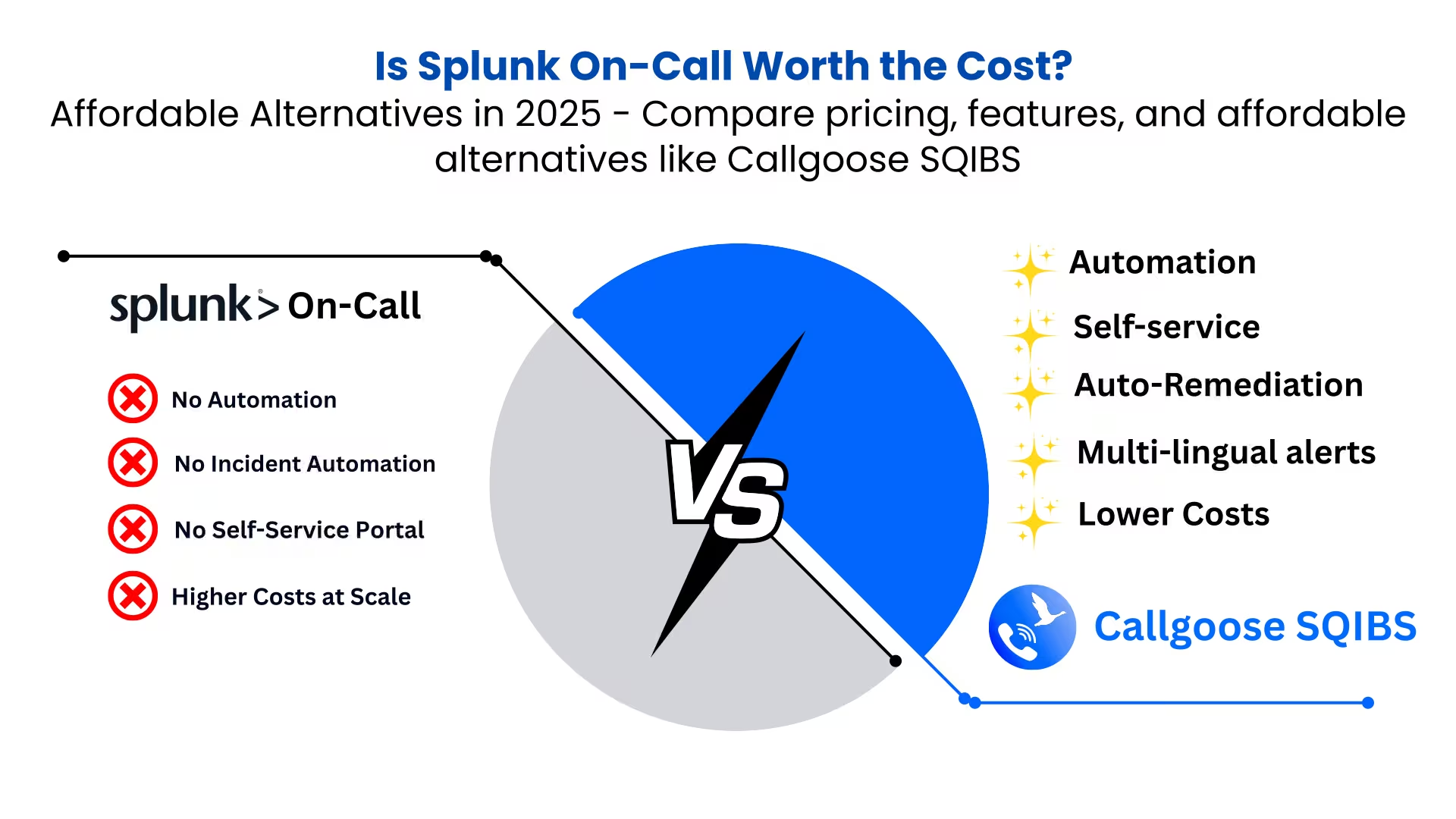
CALLGOOSE

CALLGOOSE
BLOG
16 December 2024 | Tony Philip
5 Minute Read
Event-driven automation in the IT world revolves around triggering actions based on specific events or conditions. These events can be monitored and, upon detection, can trigger automated workflows, scripts, or processes to respond to the event. Here’s a list of common event-driven automation scenarios in the IT world:

To implement event-driven automation, You can use any of your preferred tools and technologies, below are a few examples for your reference:
By leveraging these tools and using Callgoose SQIBS Incident Management and Callgoose SQIBS Automation Platform , you can set up robust event-driven automation workflows to enhance efficiency, reliability, and responsiveness in your IT operations.
Refer to Callgoose SQIBS Incident Management and Callgoose SQIBS Automation for more details

BLOG
5m Read
Top Splunk On‑Call Alternatives for Multi-Team Coordination (2025) - Compare automation, self-service, and pricing with Callgoose SQIBS
26 December 2025
|
Sophia Mark
Introduction Effective incident response requires seamless coordination between multiple teams DevOps, SRE, IT operations, and business units. Splunk On‑Call provides basic on-call scheduling and aler...

BLOG
5m Read
Best Splunk On‑Call Replacement for Scaling Teams (2025) - Compare features, automation, and pricing with Callgoose SQIBS
26 December 2025
|
Sophia Mark
Introduction As organizations scale, managing incident response becomes increasingly complex. Splunk On‑Call provides solid alerting and on-call scheduling, but growing teams often face rising costs, ...

BLOG
5m Read
Splunk On-Call Alternatives in 2025: Callgoose SQIBS vs Splunk On-Call - Compare automation, self-service, pricing and global alerts
26 December 2025
|
Sophia Mark
Introduction As IT operations grow more complex in 2025, relying solely on alert notifications is no longer enough. Splunk On‑Call provides solid on-call scheduling and incident notifications, but mod...

CALLGOOSE
SQIBS
Advanced Automation platform with effective On-Call schedule, real-time Incident Management and Incident Response capabilities that keep your organization more resilient, reliable, and always on
Callgoose SQIBS can Integrate with any applications or tools you use. It can be monitoring, ticketing, ITSM, log management, error tracking, ChatOps, collaboration tools or any applications
Callgoose providing the Plans with Unique features and advanced features for every business needs at the most affordable price.
Unique Features